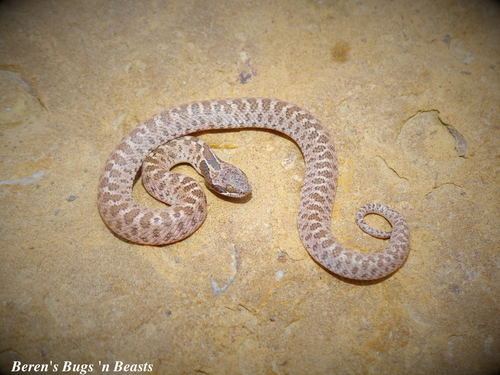
Chihuahuan Nightsnake
The Texas night snake, Hypsiglena jani, thrives in arid landscapes where it silently hunts under the moonlight. Its distinctive blotched pattern provides camouflage among rocks and sand. A key player in controlling lizard populations, this secretive predator offers a glimpse into the intricate balance of desert ecosystems.
12 years
Lifespan
Length: 25 - 61 cm
Size
Tan, Dark, Brown, Light, Grey
Color
Low
Aggression
Least Concern
Conservation Status
Stable
Population Trend
Characteristics
Hypsiglena jani, commonly known as the Texas night snake, is a small, nocturnal colubrid found in arid and semi-arid regions of Texas and northern Mexico. It has a slender body, brown blotches on a lighter background, and elliptical pupils. The snake feeds primarily on lizards and small mammals.
Distribution Range of the Chihuahuan Nightsnake
Hypsiglena jani, commonly known as the Texas night snake, is predominantly found in the southwestern United States and northern Mexico. Its geographical distribution includes parts of Texas, New Mexico, Arizona, and extends into regions of northern Mexico such as Chihuahua and Coahuila.
Chihuahuan Nightsnake's Habitat
Environmental Conditions
The Texas night snake typically inhabits arid and semi-arid regions characterized by desert scrub, rocky hillsides, and grasslands. The climate in these areas is generally dry, with hot summers and mild winters. The species is often found in environments with loose soil, which facilitates burrowing.
Ecological Niche
Hypsiglena jani is a nocturnal species, often active during the cooler parts of the night. It plays a role in controlling insect and small vertebrate populations, feeding primarily on lizards, small snakes, and amphibians. This snake is well adapted to its arid environment, relying on its cryptic coloration to blend into the rocky and sandy terrain.
Copyright @ Nature Style Limited. All Rights Reserved.
 English
English